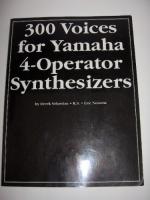|
This section contains 516 words (approx. 2 pages at 300 words per page) |

|
The earliest known "talking machine" was developed in 1778 by Wolfgang von Kempelen. Eyewitnesses reported that it could speak several words in a timid, childlike voice. While the talking machine's success appears genuine, Baron von Kempelen's accomplishments are not above suspicion. Nine years earlier, he had built a chess-playing machine, which defeated many players, including Napoleon (who, incidentally, made several unsuccessful attempts to cheat). Eventually, it was discovered that the machine was a fraud--its cabinet concealed a hidden, human chess player, who controlled the game. In 1830, Professor Joseph Faber, of Vienna, Austria, produced his own speaking automaton. Faber's machine, dubbed Euphonia, had taken twenty-five years to construct. Designed to look like a bearded Turk, the creation could recite the alphabet, whisper, laugh, and ask "How do you do?" Speech was produced by its inner workings--double bellows, levers, gears, and keys located inside the mannequin. Strangely enough, Euphonia...
|
This section contains 516 words (approx. 2 pages at 300 words per page) |

|


